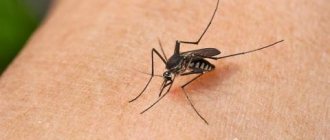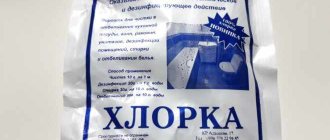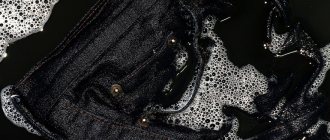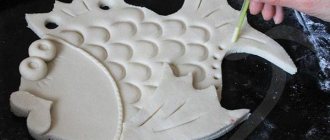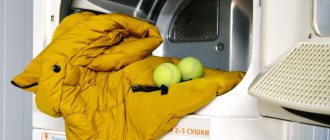- home
- Articles
- How to dry a carpet at home
Cleaning or even completely washing a carpet on your own is difficult, but doable. However, after washing, the next question naturally arises regarding drying the product. Only at first glance it seems that there is no difficulty in this, but in fact many people make unjustified mistakes, as a result of which all efforts at washing or cleaning are in vain. And it also happens that the carpet gets completely wet due to some force majeure circumstance, for example, flooding of the apartment by neighbors or a burst pipe in your apartment. How to dry a carpet at home, what you can do with the floor covering after washing, and what you shouldn’t do - read on.
How and with what to dry the carpet?
Regardless of whether the cause of the wetness was washing the product or a liquid spilled on it, the general principle of drying is as follows: if there is excess moisture, you need to collect it, then remove furniture and other heavy objects from the wet pile, and only then thoroughly dry the carpet not only with front, but also on the back side. And improvised objects and household appliances will help you with this.
Rag (paper towels, vacuum cleaner)
It is convenient to remove water using a soft absorbent cloth (cotton or microfiber) or paper towels. Moreover, the sequence of actions depends on the area of wetting.
A small wet spot should be blotted immediately to collect as much moisture as possible before it saturates the pile. If the carpet is completely wet, then you first need to collect the water spilled around it, and then remove the excess liquid from the pile. Important condition: you cannot rub the carpet; only gentle pressing of the fabric or towel is allowed.
A washing vacuum cleaner can be used for a similar purpose. It won't dry out the carpet, but it will help collect liquid easier and faster. A regular vacuum cleaner is not suitable for this purpose.
After excess moisture has been removed, you must proceed directly to drying.
Fresh air (draft)
The most affordable option in the warm season. The damp carpet should be taken outside and laid out on a flat surface, with a cotton cloth underneath it. During the drying process, it is necessary to turn the product over several times to ensure complete and uniform drying. You cannot hang it on a crossbar - there is a high risk of deformation of the base. Also, do not place the carpet in the sun - although it will dry faster, it may fade.
You can dry the carpet in the room in the same way, but this option is more suitable for partial wetness near the edge or slight moisture after cleaning. To do this, you need to create air movement (by opening windows or turning on a fan) and placing something under the carpet to lift wet areas off the floor.
Hairdryer or heater
During the cool season, the carpet takes much longer to dry, so it is better to speed up this process with a hairdryer or heater. Raising the wet area above the floor, direct a stream of hot air at it and dry the carpet first from the front side and then from the back. But do not bring the hair dryer close to the carpet to avoid deformation of the pile or backing, especially if the product is made of natural materials.
To simplify the process, you can use a household heater, placing it next to the damp carpet. But at the same time, it is important to take care of air circulation, so you should also use a fan - this will reduce the risk of product deformation due to uneven drying. And, of course, do not forget about fire safety rules - do not leave the heater unattended.
Air Dryer
The most effective and safest way is to use a dehumidifier. It does not affect the room temperature and is fireproof. Of course, this is not a technique that can be found in every home, but if the problem of high air humidity is familiar to you firsthand, then using a dehumidifier will make your life more comfortable.
An alternative to a dehumidifier is an air conditioner with a similar function. But in both cases, the carpet still needs to be turned over during drying so that the pile and base material dry evenly.
Traditional carpet cleaning methods
Soda
One of the most effective folk remedies for cleaning carpets is regular baking soda. It perfectly removes odors from the carpet and absorbs all the accumulated dirt. In order to clean the carpet at home using baking soda, two methods are suitable:
- "Dry" method. Sprinkle baking soda over the entire surface of the carpet and then vacuum thoroughly.
- "Wet method". One tablespoon of soda must be dissolved in 1 liter of water and using a spray bottle, spray the solution over the entire surface of the carpet. Then, after waiting for the solution to dry completely, carefully go through it with a vacuum cleaner.
In this way, you can return the carpet to its original brightness and freshness.
Salt
To clean the carpet, baking soda can be replaced with salt. It is advisable that the salt be finely ground, preferably “Extra”. With this method, the entire area of the carpet is evenly sprinkled with salt, then the salt is removed with a broom dipped in hot water. Next, it is recommended to thoroughly vacuum or beat out the carpet outside. The result will pleasantly surprise you.
Ammonia
In order to remove a stain from a carpet, you need to prepare a solution of 10 ml of ammonia, one teaspoon of washing powder and half a liter of water. The solution must be applied to the contaminated area of the carpet and rubbed with a brush. Then walk over the treated area with a dry cloth and wait until it dries completely.
Lemon Juice (Citric Acid)
For this carpet cleaning method, you need to squeeze the juice out of a lemon, or prepare a concentrated solution of water with citric acid. The liquid must be applied to the contaminated area and left for a couple of hours. Then, in order for the carpet not to remain sticky, you need to wipe the treated area with a sponge (rag) with warm water, then let the carpet dry thoroughly. This method is good because citric acid perfectly corrodes even old stains.
Laundry soap
This method is great for removing drink stains. However, if you overdo it with this method, the carpet may take on a “washed out” appearance. Therefore, it is highly not recommended to intensively soap the carpet with a bar of soap. It is better to use a soap solution made from sawdust (shavings) of laundry soap, which is grated and water, at a rate of 10 grams of soap per liter of water. The resulting solution is applied to the problem area and brushed with light movements. To increase the effectiveness of this method, you can add a tablespoon of turpentine to the soap solution.
After cleaning the carpet with soapy water, use a damp cloth to remove the cleaning agent. After that, treat the pile with a dry cloth and let the carpet dry. When using turpentine, it is recommended to open the windows and ventilate the room.
Vinegar
This method is similar to the method of cleaning the carpet with a soap solution. However, it is mainly applicable to surface stains. To clean a carpet or upholstery with vinegar at home, you need to prepare a solution: 2 (two) tablespoons of vinegar and 0.7 liters of warm water. After applying the solution to the contaminated area, rub it with an ordinary brush. At the end, it is recommended to ventilate the room so that the carpet dries completely and the unpleasant odor from vinegar disappears.
Sauerkraut
Sauerkraut is a great way to clean a dirty carpet at home.
To do this, cabbage (sauerkraut without vinegar) must be squeezed out and placed on the surface to be cleaned. Then, using a brush, roll it over the carpet until the cabbage darkens. Then, rinse the cabbage and repeat these steps until it stops getting dirty. Next, let the carpet dry and vacuum it.
A substitute for sauerkraut can be raw potatoes, salt, bran or sawdust.
Bread and tea leaves
In principle, for this method the actions will be similar to the option with sauerkraut. Spread evenly over the surface. We clean it up. Vacuuming.
Snow cleaning
Probably everyone at least once in their life went out into the yard on a frosty Sunday morning to beat the carpet out of the snow. There is no need to invent anything here. We spread the carpet with the pile down and beat it out over the entire surface with a beater. Next, we move it to a clean place, turn it over, sweep a little snow so that it pulls out dirt and dust from the carpet, and continue to beat it out. These steps must be repeated until the snow remains clear.
It is worth noting! It is advisable that it is frosty outside and the snow is dry. Otherwise, with wet snow, all the dirt can fit deep into the carpet.
How to dry the interior of a car after a flood?
For drying
For a “sunken” interior, ideally you need to drive the car into a warm and well-ventilated garage.
Open all the doors and point a couple of heat guns inside the cabin. A day or two in this mode and the car
will be dry.
Interesting materials:
How many years does the Kamchatka crab live? How many years does chlorophytum live? How long does love psychology last? How many years do Russian bears live? How old is the golden wedding? How much water to pour for 1 cup of rice? How many liters is the bath boiler? How many liters of oil are in one cube? How many liters are in a cast iron bath? How many liters per minute flows from the tap?
Where can I get special equipment?
There are several tools that will help get rid of moisture:
- Use a vacuum cleaner that collects water. If you don't have one, you can rent one. When the vacuum cleaner stops drawing in water, this indicates that the surface is dry.
- There is a special machine that is designed to collect warm water. It can also be rented.
- Get advice from a carpet cleaning company. They can rent special equipment. It will help dry the product from water, just make sure that there is no moisture left under the carpet.
Average score of ratings is more than 0
Share link
Comments There are no comments yet, but you could be the first...
Sorbents
Often we only know about absorbents and adsorbents that they save us after food poisoning. But this is not the only merit of any sorbents. They all absorb certain substances or gases. Absorbents are those that absorb with their entire mass and volume. And adsorbents collect substances only on their porous surface. Of the sorbents known to us for drying shoes, we will use silica gel, soda and salt.
Soda
Sodium bicarbonate or soda perfectly removes moisture and unpleasant odors from wet shoes. Place it in a fabric bag or sock and place it inside your shoes. Leave it for an hour and a half, and then check: if the cloth and soda are wet, it's time to change them.
Salt
Another natural sorbent – salt – will help dry wet shoes relatively quickly. You can use not sea food, but ordinary table food. The action scheme is the same as with soda. For better effectiveness, it is better to heat the salt in a frying pan, and then pour it into a sock and put it in your shoes. The salt will give off heat and take away moisture. Drying in this way is necessary for an hour. Usually one “salt” session is enough, but repeat the procedure if necessary.
What should you not do with a wet carpet?
Wet carpet products are sensitive to mechanical stress. Therefore, you cannot even walk on it barefoot, otherwise the pile will remain deformed. The same applies to furniture - it should be removed.
Do not carry a wet carpet unrolled, otherwise the base may stretch. Also, when moving, it is worth considering that a wet carpet product is much heavier than a dry one.
You only need to dry the carpet laid out on a flat horizontal surface and on both sides, even if it is a thin lint-free mat. The exception is carpet with a rubberized base, as it does not allow moisture to pass through.
Some useful tips
If a carpet made from natural materials gets wet, it is best to take it to the laundry or dry cleaner to dry. For example, wool and cotton are hygroscopic and take a very long time to dry, and it is almost impossible to dry it at home without spoiling a silk or viscose product without special means. Synthetic carpets are more unpretentious, but the drying of expensive long-pile products should still be entrusted to professionals.
Before moving the mat to dry, place a dry white sheet on it and roll the product together with it - the fabric will absorb some of the moisture during transportation.
A regular vacuum cleaner with a blowing function would be a good helper - it is more convenient to use it to create air circulation if the carpet is large.
As you can see, drying is not a difficult task, but it is labor-intensive. But now, if you want to clean the carpet or the neighbor upstairs causes a flood, you know how to dry everything correctly and without consequences.
What are carpets made of?
Of course, you need to understand that in some cases it is still worth paying extra and trusting professionals. And it will depend on what kind of carpet you have in your house. They come in two types:
- synthetic;
- natural.
Synthetic ones are cheaper and require less maintenance. Natural ones made of wool or silk are much more pleasant to the touch and look more interesting in the interior. However, it is precisely for them that the help of specialists is required. But only if you wet the entire coverage area. If there is just a small wet spot on the coating, you can handle it on your own.

